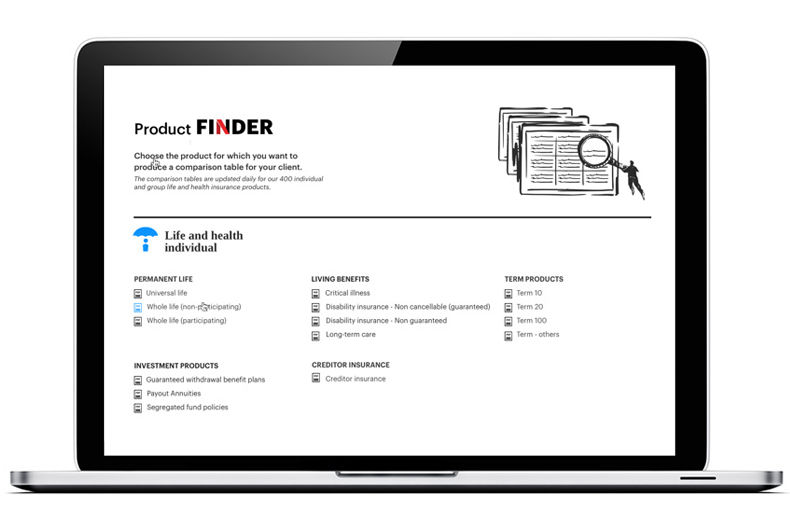
For several years now, artificial intelligence (AI) has been revolutionizing the insurance industry. Automation is speeding up claims processing, while predictive analysis is refining risk assessment. By opening the door to new possibilities, AI is redefining industry practices.
AI has been in use for over a decade by Desjardins General Insurance, confirms Pierre-Alexandre Jalbert, Vice-President Modernization, Data and Analytics.
“In general insurance, we use it in particular to improve risk selection, our efficiency in our processes and obviously the customer experience, which is our primary motivation,” he elaborates in an interview. In particular, the technology is used to analyze calls from the cooperative's members with a view to improvement. It allows us to understand why our customers call us and what information they need,” says Jalbert. We learn from this data to better inform future callers and help them in their claims process.
It has also been used for over twenty years to predict claims costs and create predictive models for premium calculation.

In the life insurance sector, AI has only recently become an integral part of employees' daily lives. Chantal Gagné, Senior Vice-President, Life and Health Insurance Division at Desjardins Group, sees great potential.
“We've been using it on our side for maybe five to ten years now,” she said in an interview with the Insurance Portal. As much as it will help us to simplify and automate processes and gain internal efficiency, we can identify more opportunities. Artificial intelligence also offers a better reading of insurance risk, for premium setting.”
Multiple uses

AI-powered processes have been in place at Intact Insurance since around 2017, says Isabelle Girard, Senior Vice President, Chief Digital and Data Officer.
The technology serves several purposes, including managing premium determination and detecting potentially fraudulent claims. “AI helps us detect elements and correlations that could tip us off to fraud strategies that might be recurring,” explained Girard in an interview with the Insurance Portal.
She is optimistic about the future of AI in the industry. “This technology opens up possibilities and facilitates others that would enable us to optimize our data collection,” she says. For example, we can think of a lot of the information processed during quote requests being manually entered into our systems by our brokers and employees: if some of this input were automated, responses to these requests would be returned more quickly.”

At Sun Life, AI serves first and foremost as a tool for employees, confirms David Atkinson, Senior Vice President, Digital Leadership and Strategy for the insurer, in an interview.
He explains that it helps the insurer customize its approach and enhance its staff’s skills. Sun Life aims to use artificial intelligence to assist its employees in their daily work, to improve their productivity and enhance customer experience.
Artificial intelligence is being used more and more. Among other things, it is used to summarize documents, identify highlights, create internal content or generate programmatic code enabling developers to work more efficiently, Atkinson said in an interview. It allows staff to focus on more human-centered tasks, he adds.
A chatbot called Sun Life Asks informs employees, like a search engine, on current products and services, but also on company policies. Since its launch just over a year ago, more than 1.3 million queries have been made.
At Manulife, around 75% of its workforce have experimented with generative AI, the company reported in a recent news release. Among the tools used is ChatMFC, a chatbot that enables employees to quickly search for and obtain answers to their questions. The generative AI assistant also serves as a translator and provides advisors with customized information to increase sales volume.
Time for experimentation
The situation is quite different at Desjardins General Insurance, where a handful of employees have access to the more advanced generative AI tools, namely “a few individuals with a data science background or an IT profile,” as well as actuaries, explains Pierre-Alexandre Jalbert.
This core group of specialists has the opportunity to experiment and develop best practices, which will then be deployed throughout the organization,” adds Chantal Gagné. All Desjardins Group employees have access to Copilot, a chatbot developed by Microsoft.
The mandate to explore the potential of AI is also concentrated within a centralized team at Intact Insurance. “We have created the Intact Lab, which I oversee, whose mandate is to incorporate new technological tools, such as artificial intelligence, into our business units and practices,” she points out.
As at Desjardins, Intact Lab members propose customized solutions to different teams and business sectors, enabling them to improve their performance by taking advantage of technology.
Formed by around 20 members in 2017, this innovation team now numbers over 1,000 across the country, Girard points out. It has a wide range of expertise, “which makes us the insurer with the largest team specializing in artificial intelligence, data and digital,” she adds. We are fortunate to be able to develop these tools in-house, while ensuring that they are used securely.
“As they are likely to be used more and more, and in a greater number of processes, by both insurers and brokers, we believe in the importance of training and awareness,” Girard underlined.
At Manulife, there is “a dedicated talent pool of nearly 200 global data scientists and machine learning engineers, embedded across the organization to scale AI capabilities,” states the insurer’s press release.
Tangible impacts
The processing of certain kinds of information and the automation of some tasks by AI also has the effect of speeding up the handling of certain files. “Let's imagine a customer calling a claims adjuster,” says Jalbert. “That agent refers to a technical advisor to answer his or her questions, but we foresee that a first round of questions could be entrusted to a chatbot.”
At Sun Life, Atkinson estimates that the use of AI has led to productivity gains of between 10% and 20%, depending on the department.
This success is attributable to the training and awareness building carried out internally, Atkinson says. The insurer worked with partners to offer information and training sessions on artificial intelligence and how to take advantage of the technology. Its employees have embraced it and are enthusiastically using it to discover its benefits, he says.
Human contact only
For the time being, he says the insurer is not comfortable using technology directly with its customers. Employees can choose to use it or not, but Sun Life wants to maintain human contact with its customers, underlines Atkinson.
However, the company does not rule out using it in the not-too-distant future to improve its customer service’s human connections. The insurer sees artificial intelligence as a way of supporting employees in their service delivery, with a view to offering a better customer experience, but certainly not as a replacement for them, he says.
A similar tone is heard at Desjardins Group. “We're exploring this technology to support our agents, but our primary objective when it comes to artificial intelligence is to create added value for our members and customers,” notes Pierre-Alexandre Jalbert.
For her part, Chantal Gagné believes that this trend could change in the future, at least as far as life and health insurance is concerned. “Generative artificial intelligence will eventually have the capacity to produce content that goes beyond analysis, and may even be able to interact with customers on certain issues,” she says, adding that Desjardins has not yet reached this stage, and that the cooperative aims to “to do things in the right order and reach a good level of operational maturity” before moving ahead.
At Intact, the use of AI is also reserved for internal use for the time being, but the tool has made its way into call centers to better redirect customers.
This is already the case at Manulife, where generative AI now supports “over 110 million calls annually.” The insurer says this technology “enhances response speed, accuracy, and service quality by providing agents with instant, source-backed answers and confidence scores.”
Limitations
However, the use of AI in business remains restricted. Limits are also imposed on employees to prevent abuse or the breach of confidential data.
At Sun Life, workers cannot use open source AI tools, i.e. whose code is publicly available and can therefore be used by anyone. They haven't been trained to use these platforms, and the insurer is not comfortable with external tools, especially since it works with confidential information whose security it has to guarantee, David Atkinson explains.
Beneva and Manulife declined the Insurance Portal's request for interviews on this subject. Canada Life, Aviva and Wawanesa did not respond to interview requests.







